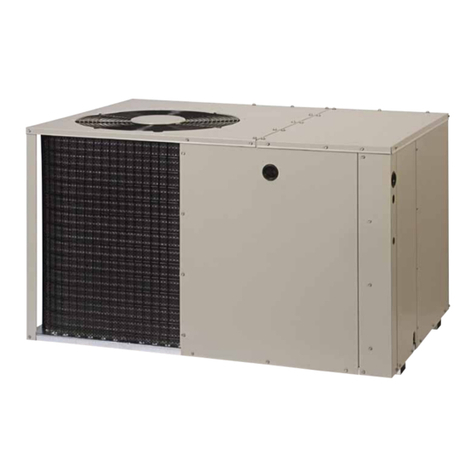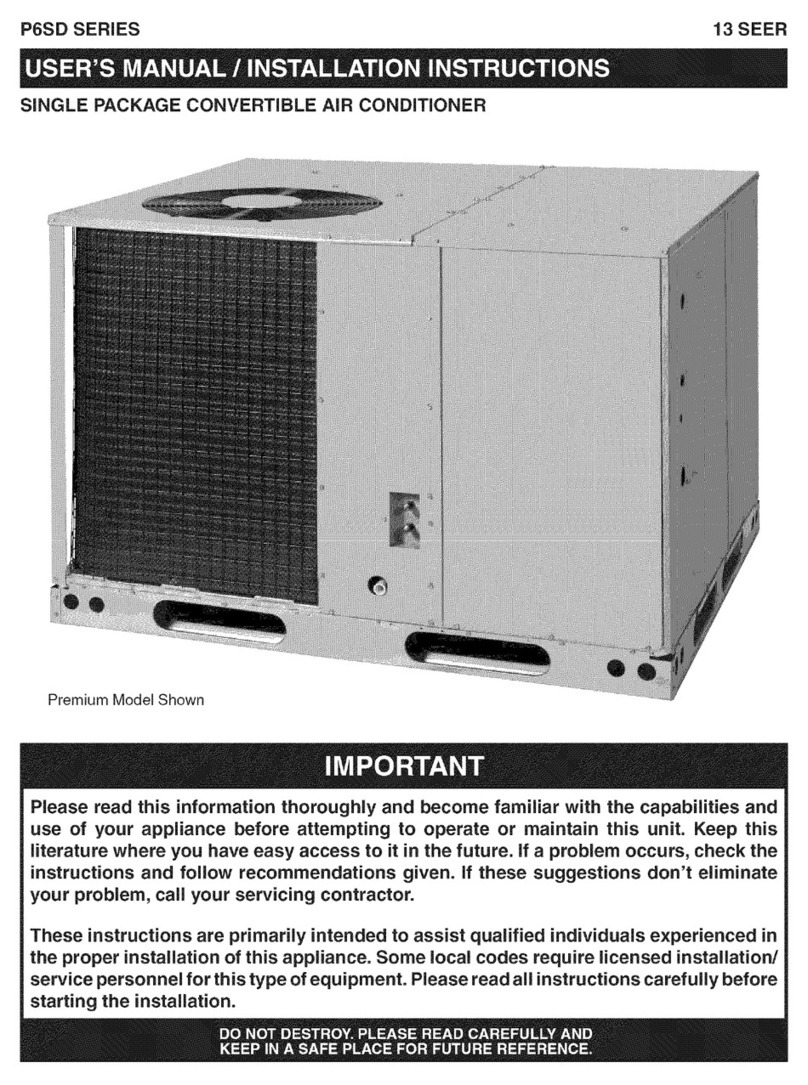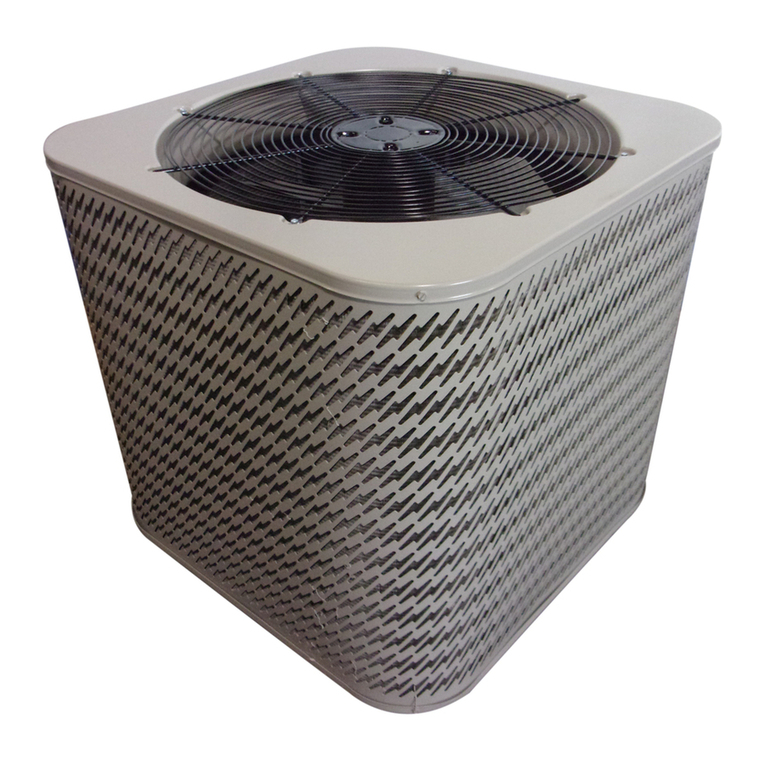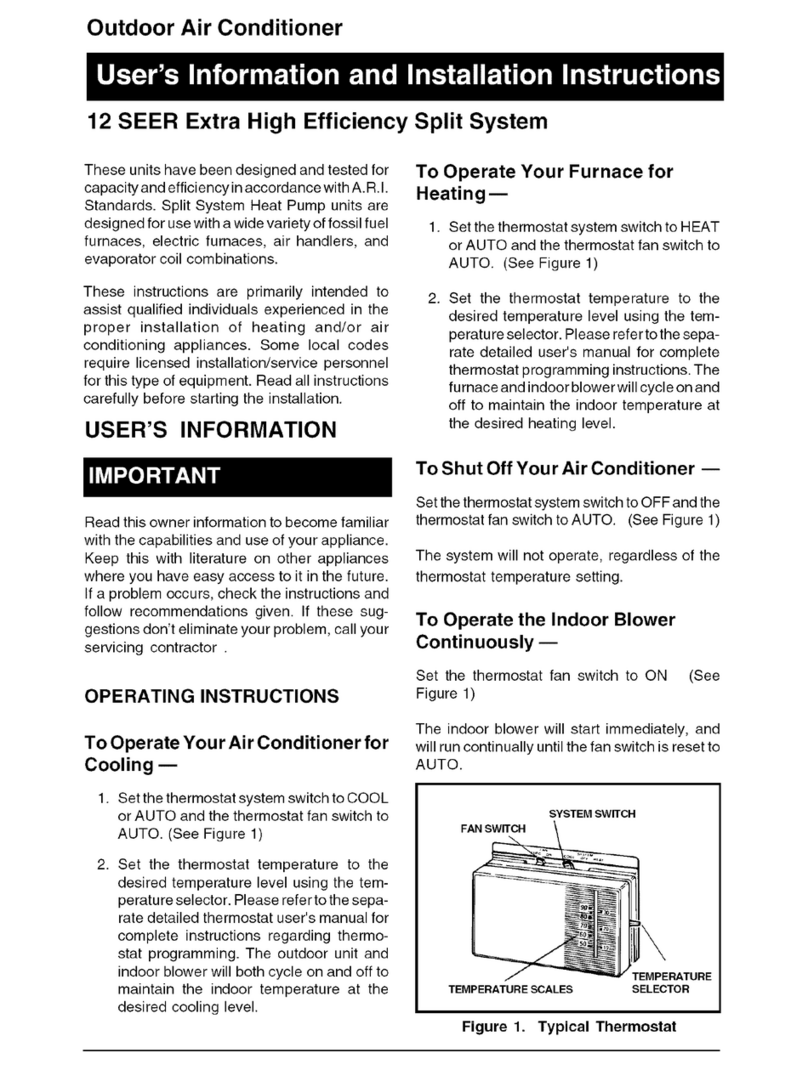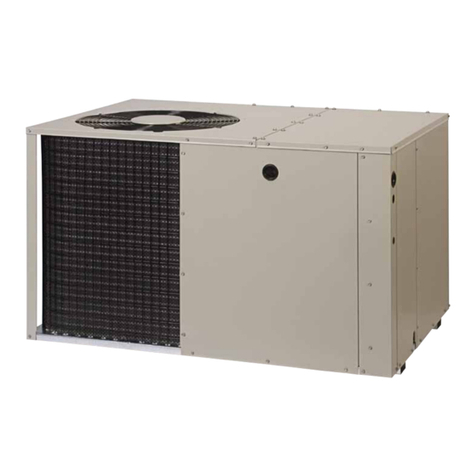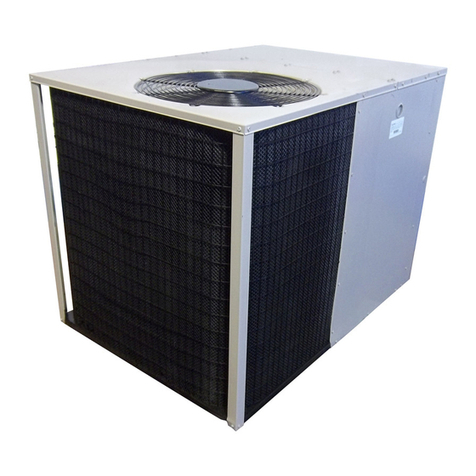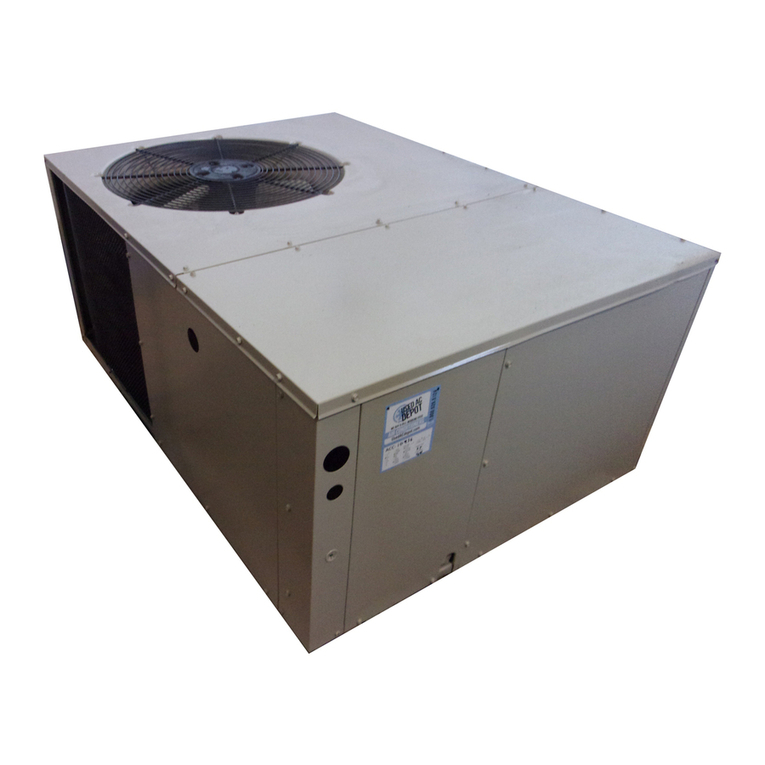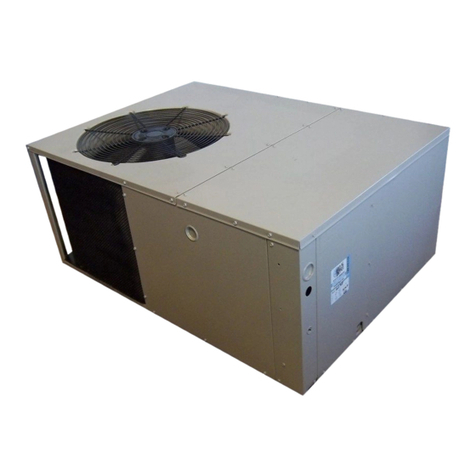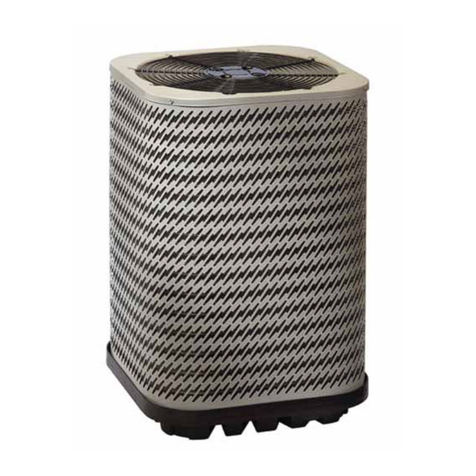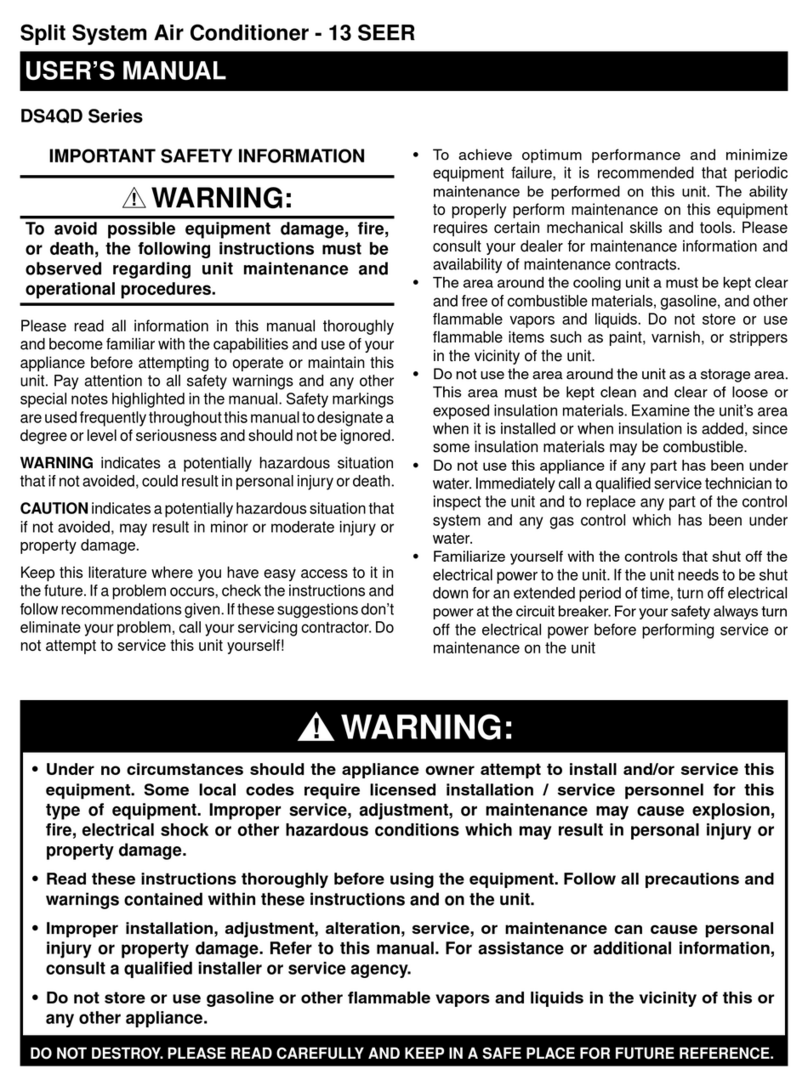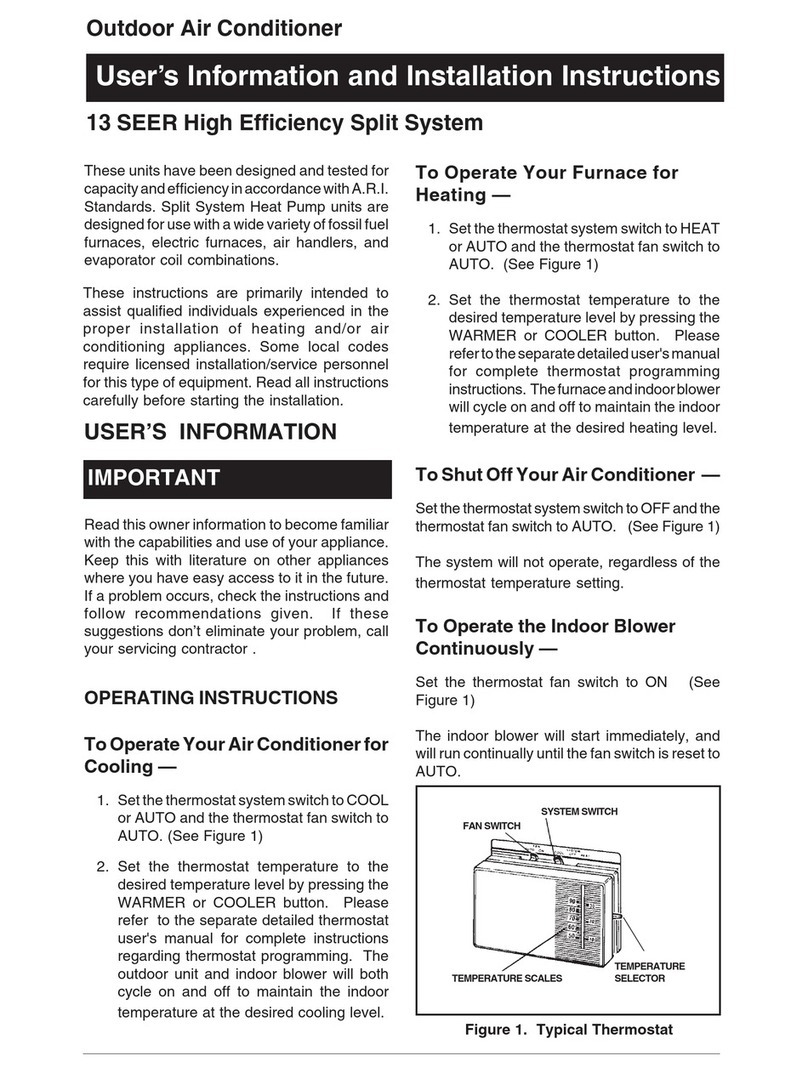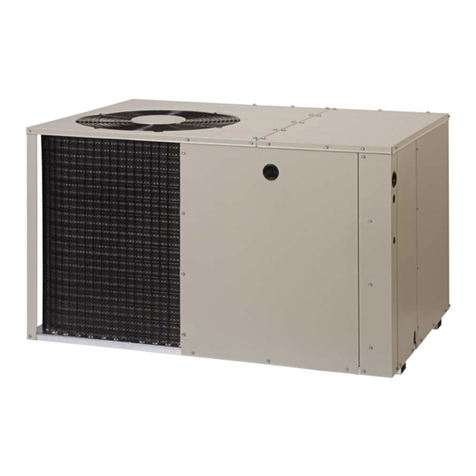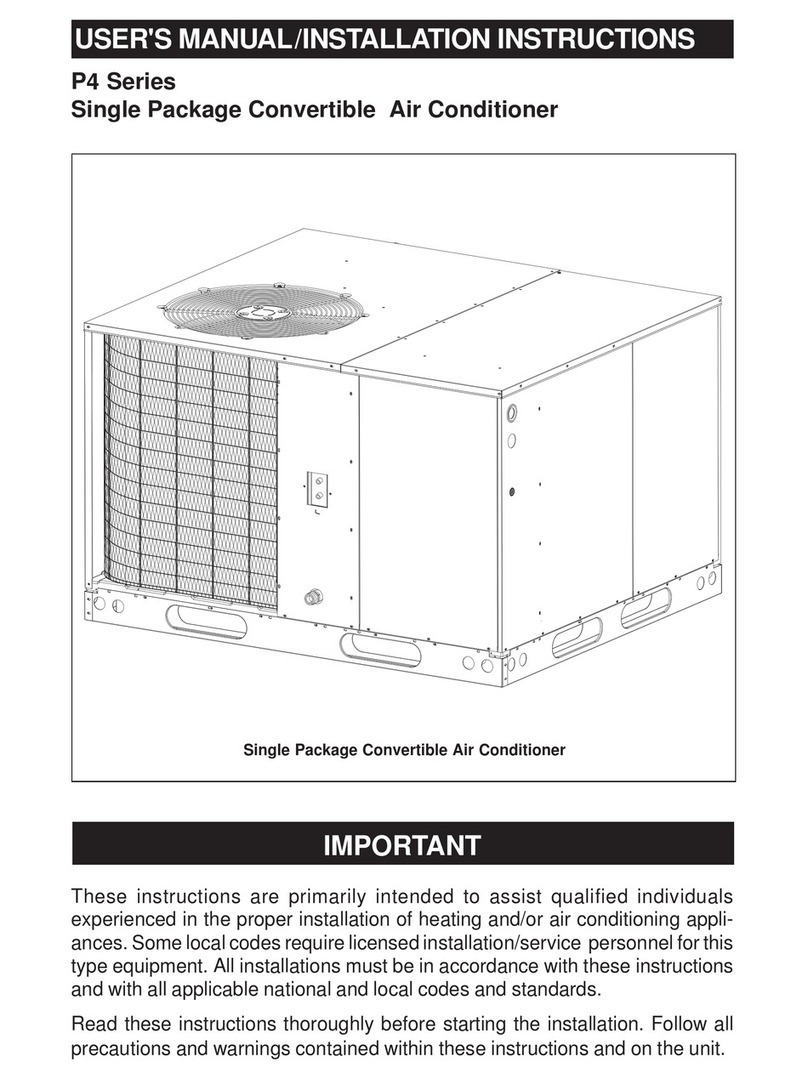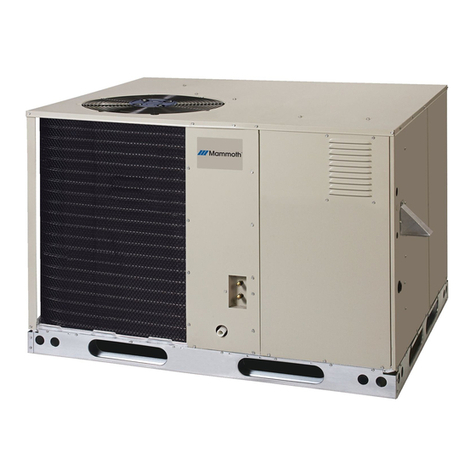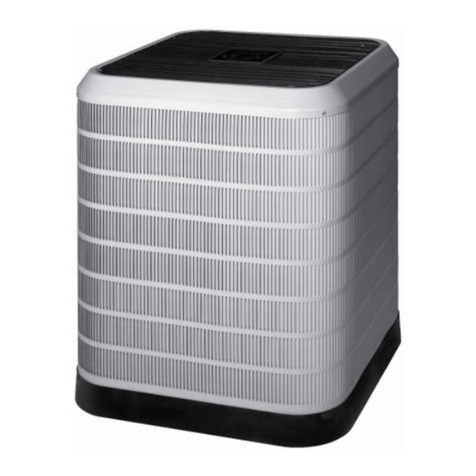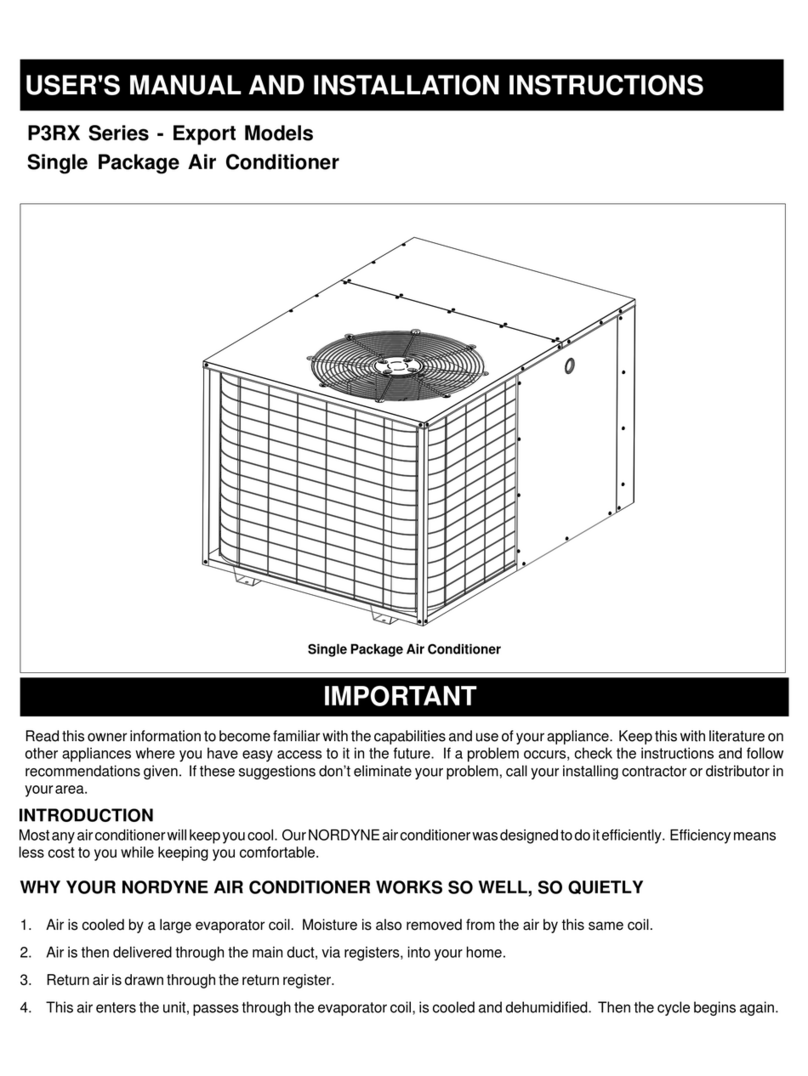
7
DISPLAY CAPACITY STAGE
C1 Cooling,StageOneCall,Low
C2 Cooling, Stage One Call, Intermediate
C3 Cooling,StageOneCall,LowHigh
C4 Cooling,StageTwoCall,NominalHigh
C5 Cooling, Stage Two Call, Boost
H1 Heating,StageOneCall,Low
H2 Heating, Stage One Call, Intermediate
H3 Heating,StageOneCall,LowHigh
H4 Heating,StageTwoCall,NominalHigh
H5 Heating, Stage Two Call, Boost
0L Startup Delay (5 minutes)
_System Powered but Idle
0F In Defrost
Table 5. Interface Board Operating Codes
For example, with a first stage call in cooling, if the setpoint
was satisfied quickly, the unit will restart the next time at a
lower speed.At a low or intermediate speed, if the setpoint is
not satisfied within 45 minutes, the speed will be increased.
If the unit cycles off after having a speed increase, the entire
next cycle will be at the higher speed. Also, the outdoor fan
will run for an extra minute after the compressor shuts off.
The actual current operating compressor speed can be
determinedbycheckingthe2-characterdisplayontheinterface
board. Refer to Figure 7 (page 12) and Table 5 (page 7).
Control operation is protected under U.S. patent number
US 8,011,199 B1
Blower Flow Rates
Depending on the indoor equipment installed, blower air flow
may be adjustable. When paired with a matching model air
handler or gas furnace, the airflow is set by DIP switches on
the blower control board, providing one flow for second stage
compressorspeedsandalowerflowforfirststagecompressor
speeds.Refertotheindoorequipmentmanualsforinstructions
onhowtoselectthedesiredairflows.Highstageairflowsused
forequipmentratingsareasfollows:
• 2ton-800cfm
• 3ton-1200cfm
• 4ton-1350cfm
• 5ton-1500cfm
Refertoindoorequipmentinstallationinstructionsforoptions,
operation, and field wiring relating to dehumidification and
humidification.
Delay Override
Whenperformingstartuptestsortroubleshooting,the5minute
startup delay can be skipped by shorting the two J4Test pins
indicatedinFigure7forabout1secondwhilethecompressor
is off and waiting to start.NOTE:This will also clear the faults
stored in memory.
Defrost Cycle
Thisequipmentfeaturesanadaptivedemanddefrostinheating
mode, which is enabled when the outdoor coil temperature
is below 35° F. After approximately 35 minutes of operating
in this condition for the first time, a defrost will be forced to
checkthedifferencebetweenthecoiltemperatureandoutdoor
air temperature, with the coil unfrosted.Subsequent defrosts
will be triggered when this temperature difference increases
(coil temperature drops) by an additional 6° F, referenced to
the outdoor ambient at that time.If this has not occurred by 6
hours of operation (with the coil below 35°), a defrost will be
runregardless.Followingeachdefrostsequence,theunfrosted
air-to-coiltemperaturedifferenceisrechecked,andthatvalue
is used to determine the next defrost trigger temperature. In
this way the effect of frosting up is always compared to the
unfrosted performance of the coil in its current condition.
During every defrost cycle the compressor first shuts off, the
reversingvalveshifts,thecyclereversestoheatuptheoutdoor
coil until the coil reaches the defrost termination temperature
setting(70°Fbydefault),thenthecompressorshutsoffagain
forthereversingvalvetoshiftbacktotheheatingmode.During
the following 8 minutes (approximately) the unit will heat at
nominal speed to perform the coil differential temperature
check described above, after which the system will return to
normal heating capacity control.
If a defrost termination temperature setting other than 70° is
desired,itcanbeadjustedbetween50°Fand80°Fbyplacing
ajumper betweenpairs ofpins on J1near the lowerright side
of the interface board inside the control panel (Figure 7). A
jumper is not required, however.
The defrost cycle may be artificially triggered for service and
troubleshooting purposes. With the unit running in heating
mode, simply short together the two J4 Test pins shown in
Figure 7 for about 1 second. NOTE: This will also clear the
faults stored in memory. The 2-character display will show
“0F”whenthedefrostcycleisunderway.
Auxiliary Heat
During the coil heating phase of each defrost cycle, the 18
SEER iQ heat pump will call for auxiliary heat (electric strip
heat or gas furnace). Depending upon the features and
functionality of the installed thermostat, auxiliary heat may
also be turned on in the case of a faulted heat pump, if the
heat pump cannot satisfy heating demand, or if outdoor air
temperatureisbelowa“balancepoint”setting.
Diagnostic Display
The interface board located inside the control panel has a
two character display which provides information regarding
operationalstatusandfaulthistory.When24vaccontrolpower
isprovidedtotheboard,thedisplaywillshowsomecombination
of characters.In order to diagnose a problem with the unit, or
to determine its operational status, remove the control panel
cover, then observe the 2-character lighted display on the
interface board. Refer toTables 5 (page 7) and 6 (page 8).
















